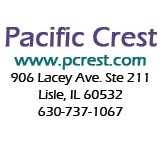|











|
 |

 Much
educational research documents that, in order to achieve
real understanding and knowledge that persists over time,
learners must actively restructure the information they
absorb. In this restructuring, the new knowledge must be
integrated with prior knowledge, experiences, and beliefs;
contradictions must be identified and resolved; and
generalizations and implications must be articulated and
applied in solving problems. Much
educational research documents that, in order to achieve
real understanding and knowledge that persists over time,
learners must actively restructure the information they
absorb. In this restructuring, the new knowledge must be
integrated with prior knowledge, experiences, and beliefs;
contradictions must be identified and resolved; and
generalizations and implications must be articulated and
applied in solving problems.
One of the hallmarks of active learners is that they
relentlessly explore through questioning—they want to
understand the hows and whys of situations at
hand. The answers to their questions provide them with new
conceptions and understandings which they then integrate
into their current knowledge base. All too often, the
natural curiosity of young children expressed in their
inquisitive (if exhausting) “but why?” need-to-know becomes,
as they grow, only passive participation where the goal is
memorizing and absorbing information, rather than seeking to
understand.
Critical Thinking Questions present an opportunity which is
explicit in the flow of a classroom activity (Critical
Thinking Questions are step 6d of the Learning Process
Methodology) and implicit in more generic learning
situations to help students explore models and guide their
inquiry through the multiple Levels of Learner Knowledge (Bloom’s
taxonomy), thus improving their performance
capabilities, and challenging them to become increasingly
active learners.
Critical thinking questions should be
selected and sequenced so that they are:
-
Relevant: must help students meet
performance criteria for activity
-
Growth-Oriented: must promote growth
for learners at multiple levels of development
-
Logical: must be thoughtfully sequenced
from lower- to higher-level questions
|
Directed Questions focus on Level 1 knowledge
consisting of information and facts. Such questions
often begin with who, what, when, where, and which. The
answers can be found by examining the model presented in
the activity, using the information resources listed, or
by drawing on personal experience and prior knowledge
and activities. Such questions have a definite answer
and build the foundation for more challenging questions. |
|
Criteria |
Examples |
|
• Preparatory: measure readiness for the learning
activity
• Exploratory: require the learner to use the resources
needed for the activity
• Accessible: motivate learners through initial success
• Foundational: deconstruct misconceptions & build
infrastructure for future learning |
Can you list the three...?
Who was...?
What facts show...?
Which one...? |
|
Convergent Questions build Level 2 knowledge
(understanding of concepts) and help students build a
foundation for later elevation of their knowledge to
Level 3 (applying knowledge to new situations).
Convergent questions require students to organize,
interpret, analyze, and synthesize. They may have more
than one correct answer, and the level of difficulty
progresses within a sequence of questions. A good
convergent question makes important connections, links
concepts together, leads to better understanding, and
requires that students reach conclusions. |
|
Criteria |
Examples |
|
• Challenging: an swers
are not directly available in the resources (model,
readings, lectures, and real-life experiences)
• Rich: allow for more than
one correct answer or approach
• Integrative: make links
between key information in the resources |
What is the effect or consequence of...?
How might x influence…?
How would you summarize...?
Why is it necessary to...? |
|
Divergent Questions send students in new and
interesting directions. They may have no right or wrong
answer, but require students to ponder, explore,
generalize, and expand their current knowledge.
Divergent questions require the highest level of
thinking and produce outcomes and conclusions that vary
among learning teams and individuals. They help identify
holes in knowledge and test understanding by challenging
the knowledge structure that was built. |
|
Criteria |
Examples |
|
• Difficult: require the
learner to go beyond the performance criteria for the
activity
• Open-ended: encourage learners to
travel down different paths of inquiry
• Validating: motivate learners to test
and generalize boundary conditions
• Deep: are possib le
research questions |
What do you predict would happen if….?
How can x be used for….?
What is a situation that illustrates…?
What would you recommend for….? |
To learn more, see the module
Writing Critical Thinking
Questions
by Dave Hanson in the
Faculty Guidebook, 4th
Edition.
|
|
|
|
|
![]()

